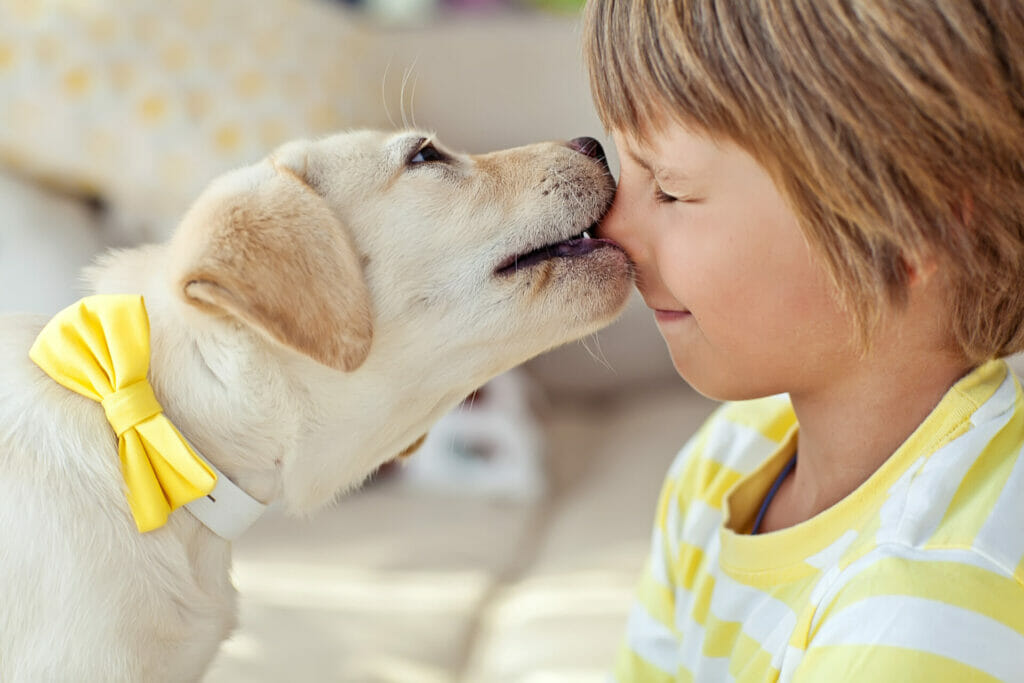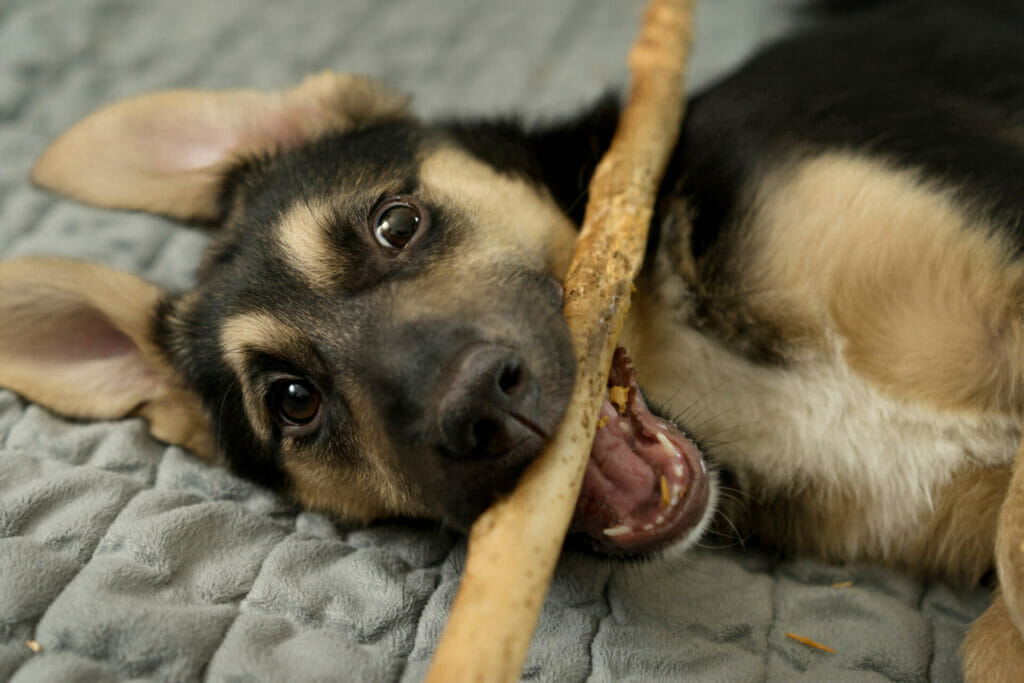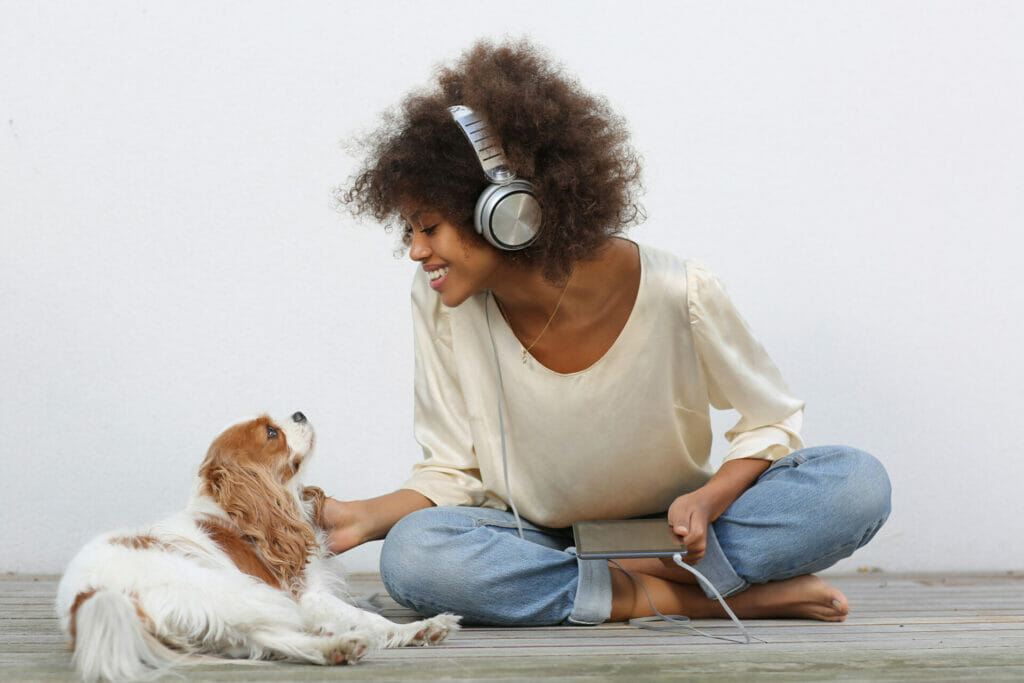Remember that period in your life, between 12 and 16 years old, when you were constantly irritable, moody, and combative? Well, humans aren’t the only species who go through the teenage years: this is called dog adolescence!
Like us, dogs are programmed to become more independent as they mature. For mammals, this is a crucial and necessary part of development for when they are supposed to become independent. The difference is that our dogs, as domesticated animals, don’t get to grow up and leave the nest. So when their brain chemistry is telling them to be more independent as we’re telling them to be more responsive to us, some conflicts can arise. But don’t worry; we’ve gathered our best tips for navigating this tricky period!
When is puppy adolescence?
There is no universal timeline for when puppies reach adolescence, as it depends on multiple determining factors, including size and breed. However, adolescence usually starts around 5-6 months of age. Your dog reaches adulthood around 18 months to 2 years.

What can I expect from adolescence?
Like our own human adolescent experience, the behavior will differ significantly between individuals, and variations in their early-puppyhood training program can affect their overall behavior, but here are some common behaviors to expect:
Around six months, if you’ve been successful in your potty training efforts, you’re probably seeing very few accidents in the house and expecting your pup to go potty outside consistently. Keep up with your potty training efforts! We don’t consider dogs potty trained until they’re one year old or they’ve gone at least six months without an accident inside. If you let up on your potty training during the adolescent phase and it results in increased accidents in the home, your dog’s housetraining may be less reliable in adulthood. Make sure to take your pup out frequently, more often than needed, to continue setting them up for success until they’re officially potty trained.
Chewing
Even if the teething phase is over, you may experience issues with your pup chewing on “illegal” items in your home during adolescence. Continue redirecting them and rewarding them for chewing on “legal” items like toys and bones, and restrict their unsupervised access to items you don’t want them to chew, like shoes and living room furniture.
It takes months to years and incredible consistency to train a foul-proof recall, so it’s no surprise that as your pup hits puberty, with their emotions running rampant, they’re suddenly struggling to respond during dog adolescence to your “Come” cue when in the presence of high-value distractions, like the opportunity to interact other dogs. Go back to basics! Use a long line when outside to keep your pup safe while you practice your recall and re-establish the cue. Also – make it fun! The more fun it is for your dog to practice their recall, the stronger their response will be in the face of distractions.
Impulse Control
Your pup’s hormones are raging during puberty, just like they do with us, humans! So your dog’s emotions and feelings will be at an all-time high, causing them to be more impulsive than usual. If your dog’s “Wait” cue is suddenly lacking, lower the criteria! Practice inside first without distractions, and decrease the time you expect them to wait before releasing them. This helps to set them up for success, and you can slowly rebuild your criteria with time!
Tips for success during dog adolescence:
Reset Expectations / Reduce Criteria
While your pup is navigating their newly intense emotions and biological cues to be independent of you, manage your expectations of their responsiveness to you! Don’t get frustrated with them if they are struggling to listen to you; they’re not trying to be defiant; they’re just dealing with a lot of things that are making it harder for them to stay focused on you. Reduce your criteria for the behaviors you expect of them, and increase your rate of rewards for when they do respond to you. You can also try increasing the value of your treats; if they’ve been offered the same treatment for the past few months, change it up! Offer something new or more valuable to them, like cheese or deli meat.

Review Previously Learned Behaviors
Do some practice sessions of the behaviors your pup has previously learned. Practice them at home without distractions and make them FUN! If you review the cues and behaviors your pup has been successful at before, you’ll continue laying the foundation for great responsiveness from your pup when they exit adolescence!
Make sure to manage your pup’s energy and strengthen your bond with them with lots of play and exercise. A normal walk around the block does not offer exercise for a typical dog. Toss a ball in the backyard or take them with you on the run through the neighborhood to wear them out.

Choice
Find opportunities to give your dog choices. As they feel the urge to be independent, they’ll feel more fulfilled with the opportunity to make choices. Offer them a choice of which way to go on a walk and which toy they want to play with, or you can even make them two dinners and let them choose which one they want!
*Note: when teaching your dog about choices, it’s essential that they only get the option they choose. You want them to learn that a choice means they get one option and not the other. This will help them make more informed choices!
BEWARE THE FEAR PERIOD
Many otherwise social and happy-go-lucky dogs will experience a fear period of anywhere between 6 and 24 months. It’s critical to recognize this fear period when it’s happening and seek the counsel of a qualified force-free Pet Professional. Fear periods typically last 2 – 3 weeks, and you must keep your pup from any negative experiences during this time. “During a fear period, a single intimidating or painful experience can have a lifelong impact on how your dog responds to that stimulus. This phenomenon (referred to as “single-event learning”) means that it can take only one negative fear-causing incident with a particular trigger to cause an intense, permanent emotional response to that trigger in the future, regardless of the circumstances.”
Hang in there through the teenage years with your pup. If you stay consistent with your training and set yourself up for success, you’ll have an incredible foundation for your pup to work from as they become their adult selves!




















